- ~ Home
- ~ Camino Portugués (The Portuguese Way)
- Coimbra Portugal
Jump to Camino Portugués Stages
Coimbra, Portugal ~ The Medieval City on the Hill
Disclosure: the PilgrimageTraveler.com is an associate of Booking.com, Roamless, and Amazon. As associates of these merchants, we earn from qualifying purchases from our links.
A visit to Coimbra, Portugal is a step back in time, as you walk the many steps and inclines of the city on the hill. The historic University in this town is a Unesco World Heritage site and its many cathedrals and historic buildings can occupy the pilgrimage traveler for a long while.
“University can teach you skill and give you opportunity, but it can't teach you sense, nor give you understanding. Sense and understanding are produced within one's soul.” ~ C. JoyBell C.
Our half day tour of the city of Coimbra was a sight-seeing wonder. Exploring old European cities is a soul tending activity for me, for sure! One could easily spend many days here, and in some ways I wish we had. If not for our Camino schedule, we would have lingered much longer.
🙋♀️ Why Trust Us at the Pilgrimage Traveler?

We’re not a travel agency ~ we’re fellow pilgrims! (See About Us)
We've trekked Pilgrimage Routes Across Europe since 2014!
💬 We’ve:
- Gotten lost so you don’t have to. 😉
- Followed waymarks in the glowing sunlight, the pouring rain and by moonlight. ☀️🌧️🌙
- Slept in albergues, hostels & casa rurals. Ate and drank in cafés along the way. 🛌 😴
- Created comprehensive and downloadable GPS maps and eBook Guides, full of must-have information based on real pilgrimage travels. 🧭 🗺️
- Shared our complete journeys, step by step to help YOU plan your ultimate pilgrimage and walk with your own Heart and Soul. 💙✨
Every detail is from our own experiences. Just fellow pilgrims sharing the Way. We have added a touch of spirituality, heartfelt insights and practical guidance from the road ~ offering a genuine connection to the spirit of pilgrimage. Tap into the wisdom of seasoned pilgrims!
Ultreia and Safe Pilgrimage Travels, Caminante! 💫 💚 🤍
I have highlighted the attractions that we were able to see, and regret some of the famous ones that we did not. Gives me a reason to return, I guess!
Here is a Google map of Coimbra where I placed my personal photos from this article, so you can orient yourself prior to your own visit. I hope you enjoy it!
Walking into the town of Coimbra, Portugal on day nine of our Camino, was special indeed. Seeing the medieval city on a hill from views on the south bank of the Rio Mondego and the hills above, one can truly appreciate the location of this city. It is easy to see why this site was chosen in times when defense was everything.
In the Largo da Portagem, the square on the north side of the Mondego River is the statue below, a former 19th century president of Portugal and the focal point of the square.
Surrounding the square on the northwest are wonderful buildings with very interesting features, in the hotel on the left and the bank in the center.
On the southeast side, the square is lined with cafés, inviting you to lull here for awhile. We did just that with our Aussie mates, at happy hour, over appetizers and the luscious Portuguese wine. It is a glorious way to nourish the body and the soul!
Jump to Camino Portugués Stages
From the Portagem Square, we found the street below, the Rua Ferreira Borgos, to start our tour of the medieval section. It was on this street that I found a pharmacy to buy an ankle support for my mysterious swollen ankle from the days prior.
Lots of shopping and more cafés can be found on this street. We did manage to linger over a Pastel de Nata (famous Portuguese custard tart) and a café leite, later in the afternoon along this street in the Café Nata Lisboa. Eating Nata is my idea of supreme soul tending! The café's tagline is "The world needs more Nata," and I wholeheartedly agree!
We left the shopping street, turning right to walk onward up a step incline on the Rua do Arco Almedina to the famous old tower of the original Moorish town walls, the Torre da Almedina. Medina means town in Arabic, and these walls were first built in the 9th century, but what you see today was reconstructed in the 12th.
These side-by-side pair of turrets includes the arch on the right, the Arco da Almedina. You can see the tourist shops that line the way. If you have time, there is a museum and an interpretive center inside this Tower, which we did not see.
Instead, we climbed higher on the Rua do Arco Almedina, up many steps and toward the old cathedral. Wear good walking shoes to visit Coimbra, Portugal!
But first we took a side street to the north, the Rua Sobre Ribas. Lots of interesting architectural features down this narrow old medieval street.
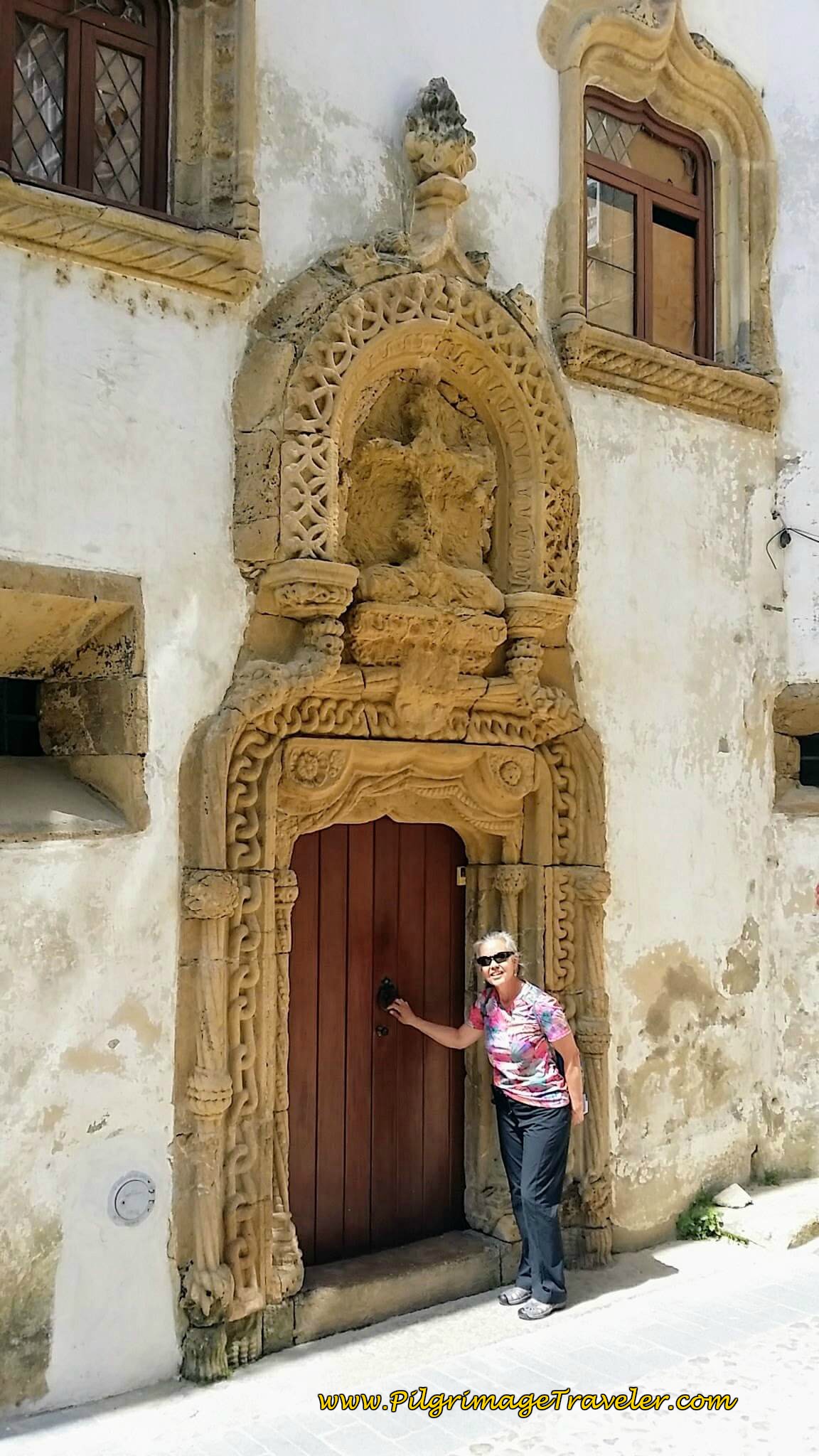 Manuline Threshold on the Rua Sobre Ribas
Manuline Threshold on the Rua Sobre Ribas Narrow Streets of the Rua Sobre Ribas
Narrow Streets of the Rua Sobre RibasWe walked only a few hundred meters, to this point, the Torre de Anto, yet another famous tower that was part of the town wall. This medieval tower is not the white one you see, but the tan one on the left side of the photo.
 Torre de Anto, Coimbra, Portugal
Torre de Anto, Coimbra, PortugalWe retraced our steps back to the Rua Quebras Costas, and once again were faced with steep stairs toward the old cathedral.
Jump to Camino Portugués Stages
After the stairs, the square holding the Old Cathedral, the Sé Velha, opens up gloriously in front of you!
According to the Sé Velha information boards, this Old Cathedral of Coimbra is built in a very rare Reconquista Style of architecture, a Romanesque style with Arabic influences. The cathedral was started in 1162 through the financing of the first king of Portugal, Afonso Henriques, and the first service was held here in 1184.
Moving to the exterior north side, is the obvious Porta Especiosa, translated to be the Special or Beautiful Door, of later Portuguese Renaissance style, added in the 16th century.
There is a beautiful Our Lady with Child medallion above the door, seen best on the photo on the right.
 The Renaissance Door on the Northern Façade, 16th C. ~ Sé Velha Coimbra
The Renaissance Door on the Northern Façade, 16th C. ~ Sé Velha Coimbra Close-Up of the Renaissance Door ~ Sé Velha Coimbra, Portugal
Close-Up of the Renaissance Door ~ Sé Velha Coimbra, PortugalAnd on the eastern side, the altar apses can be seen, below. The many steps on the left side of the photo, leads you higher up the hill to the New Cathedral or Sé Nova, and eventually to the University complex.
The Old Cathedral is a museum and we spent quite a bit of time here. There is so much to see. Here is just a glimpse of the interior of it. (Click here for their official website. You will have to translate it into English.)
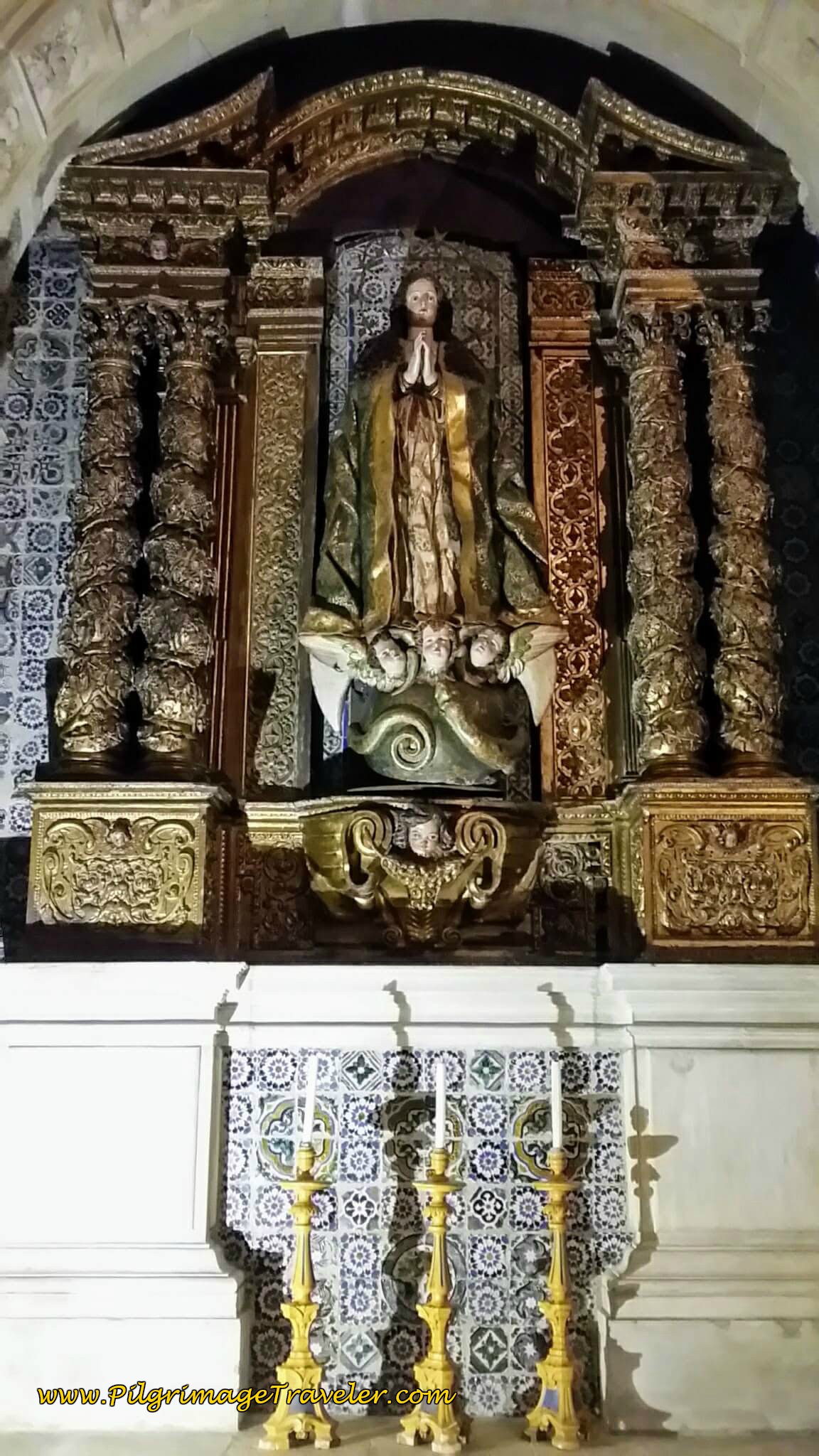 Altar to Fátima, Sé Velha Coimbra
Altar to Fátima, Sé Velha Coimbra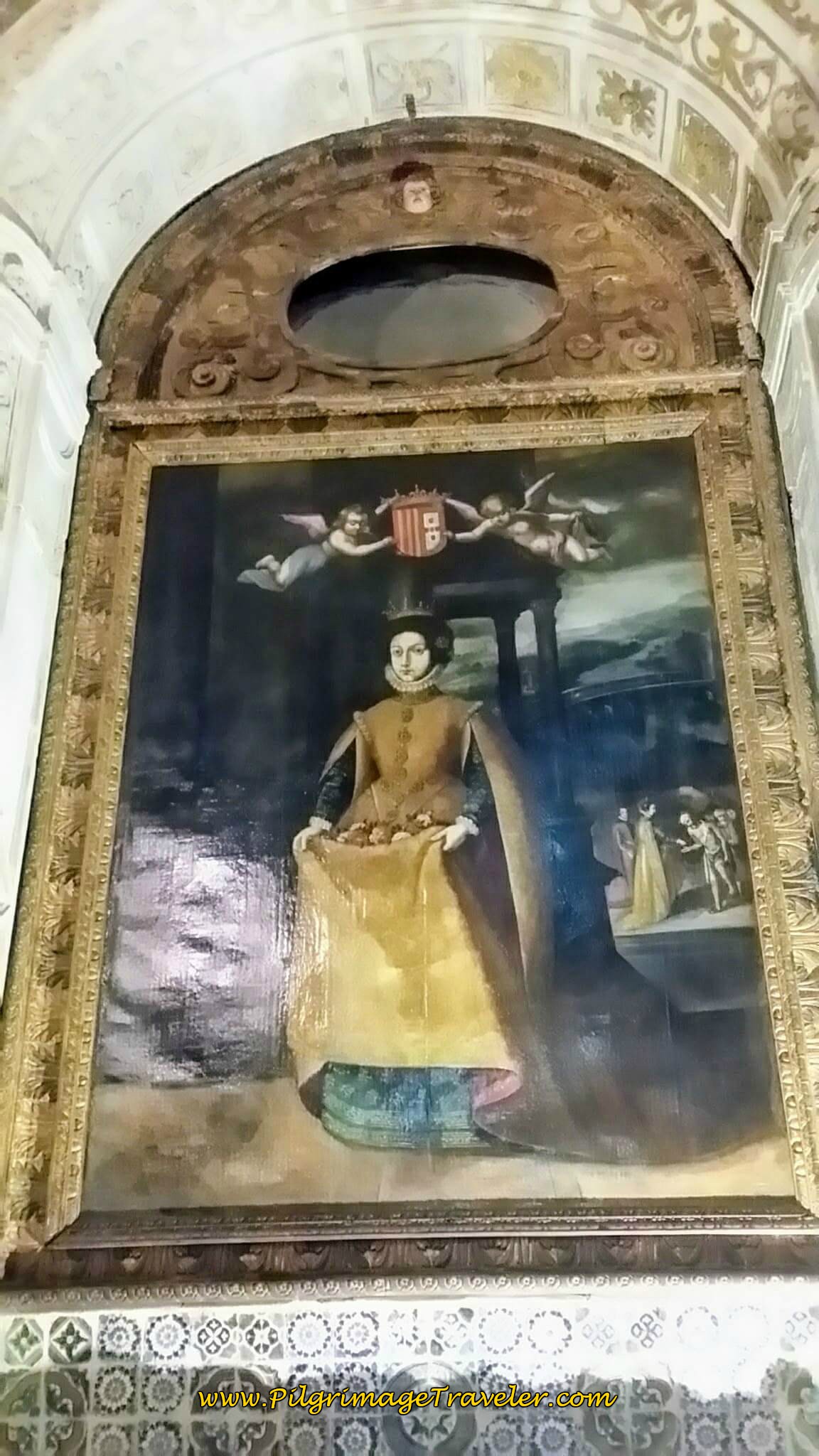 Portrait of the Queen, Saint Isabel
Portrait of the Queen, Saint IsabelThen next, the pilgrimage traveler must spend some time in the Gothic cloister, built many centuries after the cathedral.
Despite all the folks strolling about here, its centuries of holy energy and the concomitant hush that will also impact your soul in the present moment. Again, I wished I could have stayed and watched the changing light and shadows play against the vaulted passageways.
Jump to Camino Portugués Stages
Then it was time to go. Around the rear and eastern end of the Sé Velha, one climbs more stairs and steep inclines to reach the top of the hill or the "Alta de Coimbra" to see the New Cathedral of Coimbra, or the Sé Nova de Coimbra, Portugal. This is the current bishopric seat of the city.
The New Cathedral is not a museum, and while it may be more impressive in structure than the old, in my opinion, it was less appealing. Finished in the 17th century, it is a place of grandeur.
There is no official website for the Sé Nova, you can read more about it from Wikipedia, by clicking here.
Climbing to the uppermost part of Coimbra, just before the New Cathedral Square, you actually see the Museu Nacional Machado de Castro first, left photo, below. This National Museum has many impressive exhibits, including Queen Isabel’s less impressive jewels! You may wish to create time in your schedule to see it.
 Museu Nacional Machado de Castro, Coimbra, Portugal
Museu Nacional Machado de Castro, Coimbra, Portugal Soaring Reach of the New Cathedral of Coimbra
Soaring Reach of the New Cathedral of CoimbraThe interior of the Sé Nova de Coimbra is grandiose indeed with gilded wood carvings everywhere. The altars were completed in the 17th and 18th centuries, according to Wikipedia and are of the said, " National Portuguese Altar style."
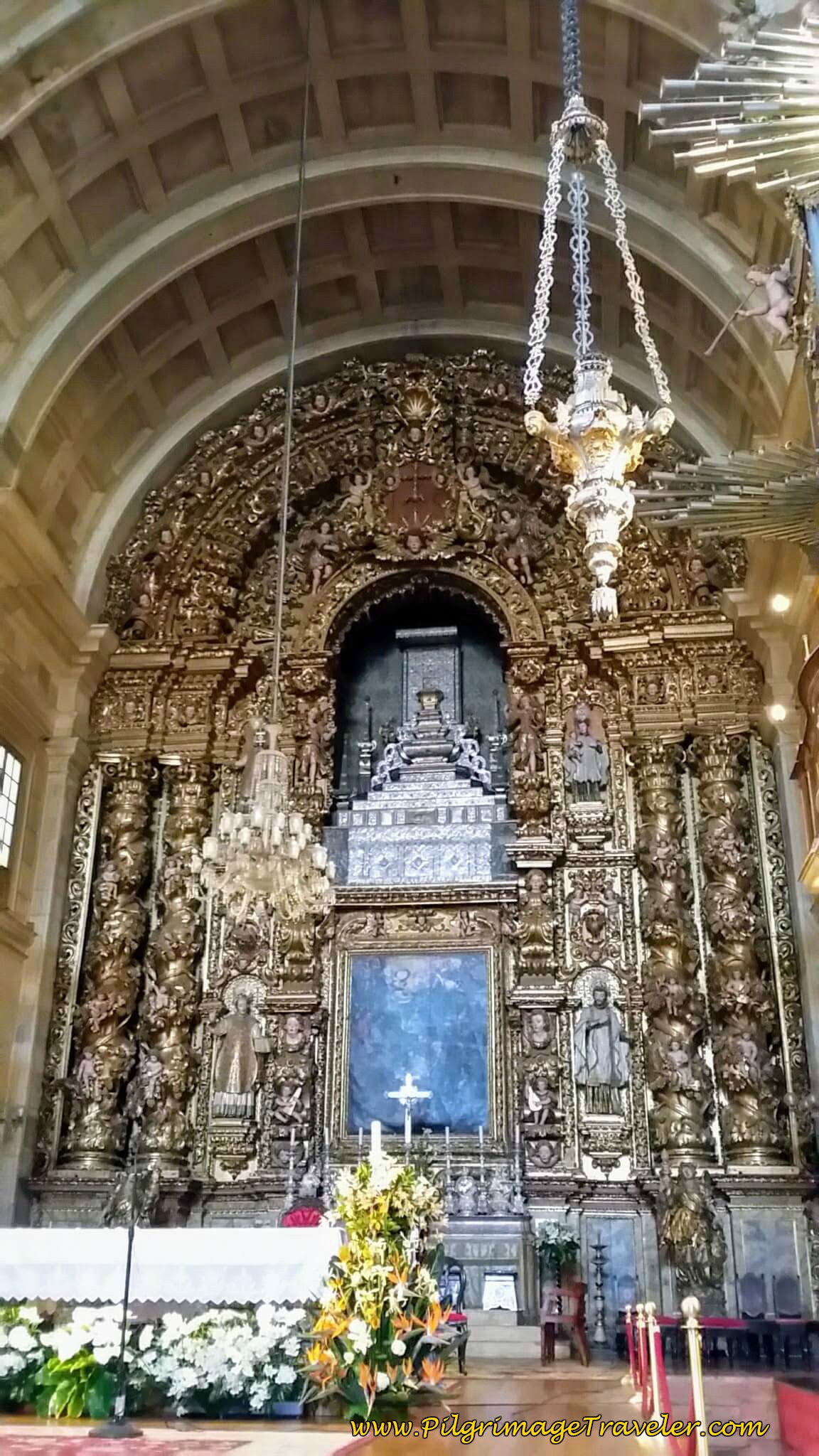 Main Altar, Sé Nova de Coimbra
Main Altar, Sé Nova de Coimbra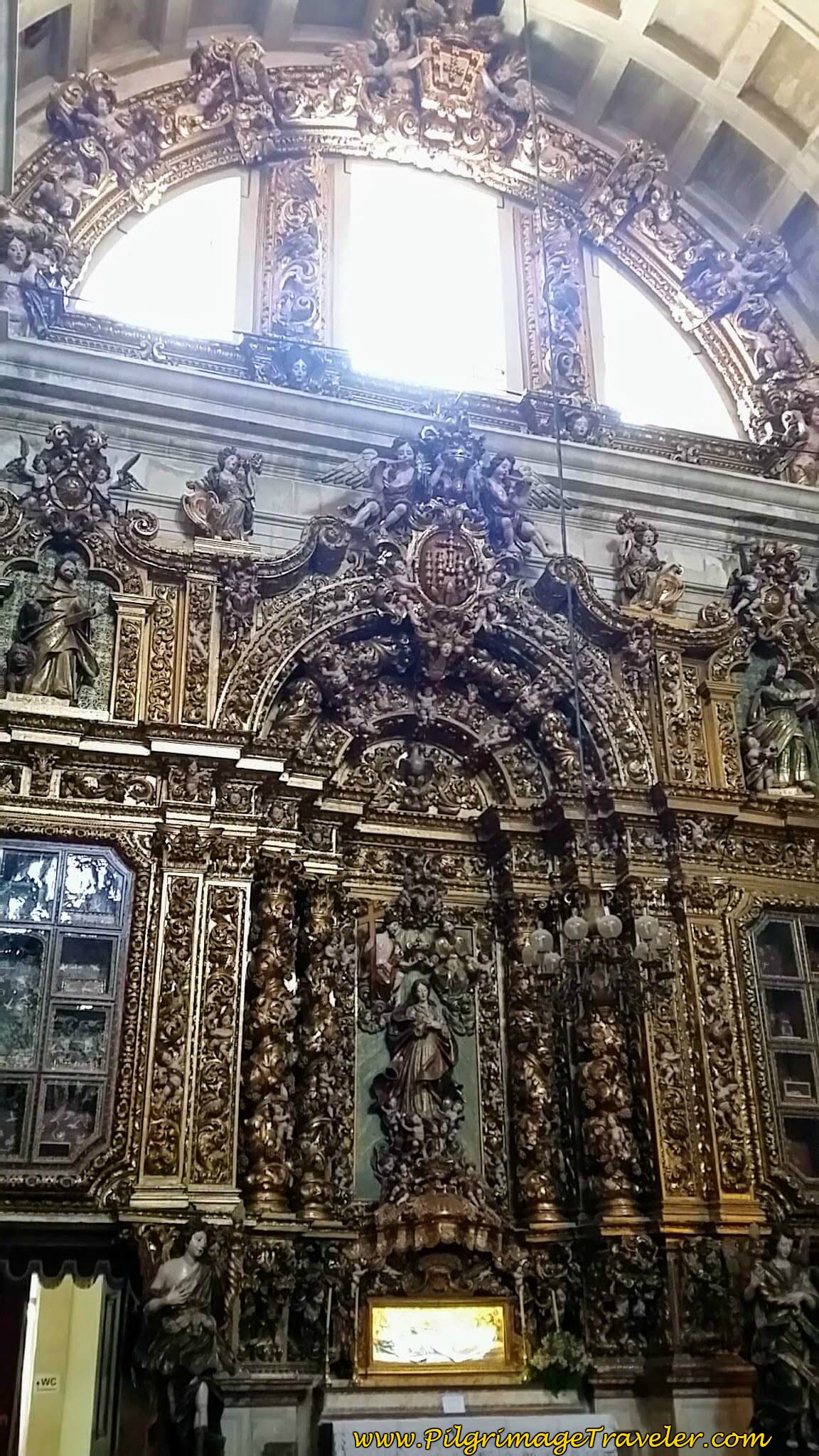 Side Altar, Sé Nova de Coimbra
Side Altar, Sé Nova de CoimbraI did not end up spending much time here, as the setting was less intimate, and the day was waning quickly. In fact, Rich didn't even go inside with me, he was already weary of touring. We needed to move on to the University buildings if we were to see them at all.
Onward to the crest of the hill along the Rua São Pedro, one comes to the Porta Férrea, the grand entrance to the famous University of Coimbra square, the Paço das Escolas (Palace of the Schools), shown in the photo below.
Inside the main university square, it is just breathtaking. The clock tower, around which the univerity life centers, is the first thing you see when entering at the Porta Férrea, above.
Adjacent to the clock tower is this old royal palace, that was converted to university buildings, housing administrative services and various faculties.
Looking to the West, is the grand statue of King João III, the person responsible for making the university's permanent home in Coimbra, Portugal.
The Joanina Library, seen to the right in the photo above, and below, is a gorgeous building, at the far end of the main university square.
Looking back to the main buildings, from the Minerva Stairs area, is shown in the photo below.
Instead of waiting in long lines to go up the university clock tower, we basked in the views from the western end square, near the Escadas de Minerva, or Minerva's Stairs.
We did not enter any of the buildings of the square, we were just toured out for the day, and it was pricey and the lines were long with tour groups.
Instead we walked down the long main street to the East, the Largo Porta Férrea. Turning back, the view is lovely, of the main entrance and clock tower.
Jump to Camino Portugués Stages
All the sidewalks and plazas here are lined with beautifully designed granite setts, like shown in the photo below. These are not true cobblestones, but everyone calls them that!
And at the end of the Largo Porta Férrea, is the statue of the founder of the university himself, King D. Dinis.
👣 Camino Portugués eBook Guides
Enjoy all the valuable info from our web pages ~ offline, ad-free, and beautifully formatted, including our photos. Why carry a heavy guidebook when you can use a nimble digital version on your device?
Our guides are frequently updated and uniquely entertaining, as we share our own Camino story along the way.
📲 Instant download. 💸 Money-back guarantee. 🔄 Free updates for 1 year.
Buy only what you need ~ or grab all four for the price of three (25% savings). Click here for more information or BUY NOW at only 17.85!
We suddenly realized that we had not yet seen the church dedicated to Santiago in Coimbra. Quickly heading back down the long hill, we found the small and inconspicuous church, below.
The simplicity of this old church is stunning. We were unable to stay long, if we were to meet our friends for the evening.
While a temple was originally built here in the 10th century, what you now see is a 12th century Romanesque church.
 Interior of Igreja de São Tiago, Coimbra, Portugal
Interior of Igreja de São Tiago, Coimbra, Portugal Igreja de São Tiago
Igreja de São TiagoThis concludes our tour of Coimbra, Portugal! May your own journey there nourish your soul with discovery, knowledge and understanding as you, the pilgrimage traveler, open your heart to a new way of being!
Camino Portugués Overview
Camino Portugués Stages
Central Route: Lisbon to Porto Stages
Central Route: Porto to Santiago Stages
Senda Litoral or the Coastal Routes: Porto to Santiago Stages
Skip to Central Route Above, for Final Days 22-25 to Santiago
Variante Espiritual Stages
Please Consider Showing Your Support
Many readers contact me, Elle, to thank me for all the time and care that I have spent creating this informative website. If you have been truly blessed by my efforts, have not purchased an eBook, yet wish to contribute, I am exeedingly grateful. Thank you!
Search This Website:
🙋♀️ Why Trust Us at the Pilgrimage Traveler?

We’re not a travel agency ~ we’re fellow pilgrims! (See About Us)
We've trekked Pilgrimage Routes Across Europe since 2014!
💬 We’ve:
- Gotten lost so you don’t have to. 😉
- Followed waymarks in the glowing sunlight, the pouring rain and by moonlight. ☀️🌧️🌙
- Slept in albergues, hostels & casa rurals. Ate and drank in cafés along the way. 🛌 😴
- Created comprehensive and downloadable GPS maps and eBook Guides, full of must-have information based on real pilgrimage travels. 🧭 🗺️
- Shared our complete journeys, step by step to help YOU plan your ultimate pilgrimage and walk with your own Heart and Soul. 💙✨
Every detail is from our own experiences. Just fellow pilgrims sharing the Way. We have added a touch of spirituality, heartfelt insights and practical guidance from the road ~ offering a genuine connection to the spirit of pilgrimage. Tap into the wisdom of seasoned pilgrims!
Ultreia and Safe Pilgrimage Travels, Caminante! 💫 💚 🤍
Follow Me on Pinterest:
Find the Pilgrimage Traveler on Facebook:
Like / Share this page on Facebook:
***All Banners, Amazon, Roamless and Booking.com links on this website are affiliate links. As an Amazon associate and a Booking.com associate, the Pilgrimage Traveler website will earn from qualifying purchases when you click on these links, at no cost to you. We sincerely thank you as this is a pilgrim-supported website***
PS: Our eBook Guide books are of our own creation and we appreciate your purchase of those too!!
Shroud Yourself in Mystery, along the Via de Francesco!
Walk in the Footsteps of St. Francis, and Connect Deeply with the Saint and to Nature in the Marvelous Italian Countryside!
Need suggestions on what to pack for your next pilgrimage? Click Here or on the photo below!
Find the Best Hotel Deals Using This Tool!
Carbon Trekking Poles ~ My Favorites!
Carbon fiber construction (not aluminum) in a trekking pole makes them ultra lightweight. We like the Z-Pole style from Black Diamond so we can hide our poles in our pack from potential thieves before getting to our albergue! There are many to choose from! (See more of our gear recommendations! )
Gregory BackPack ~ My Favorite Brand
Do not forget your quick-dry microfiber towel!

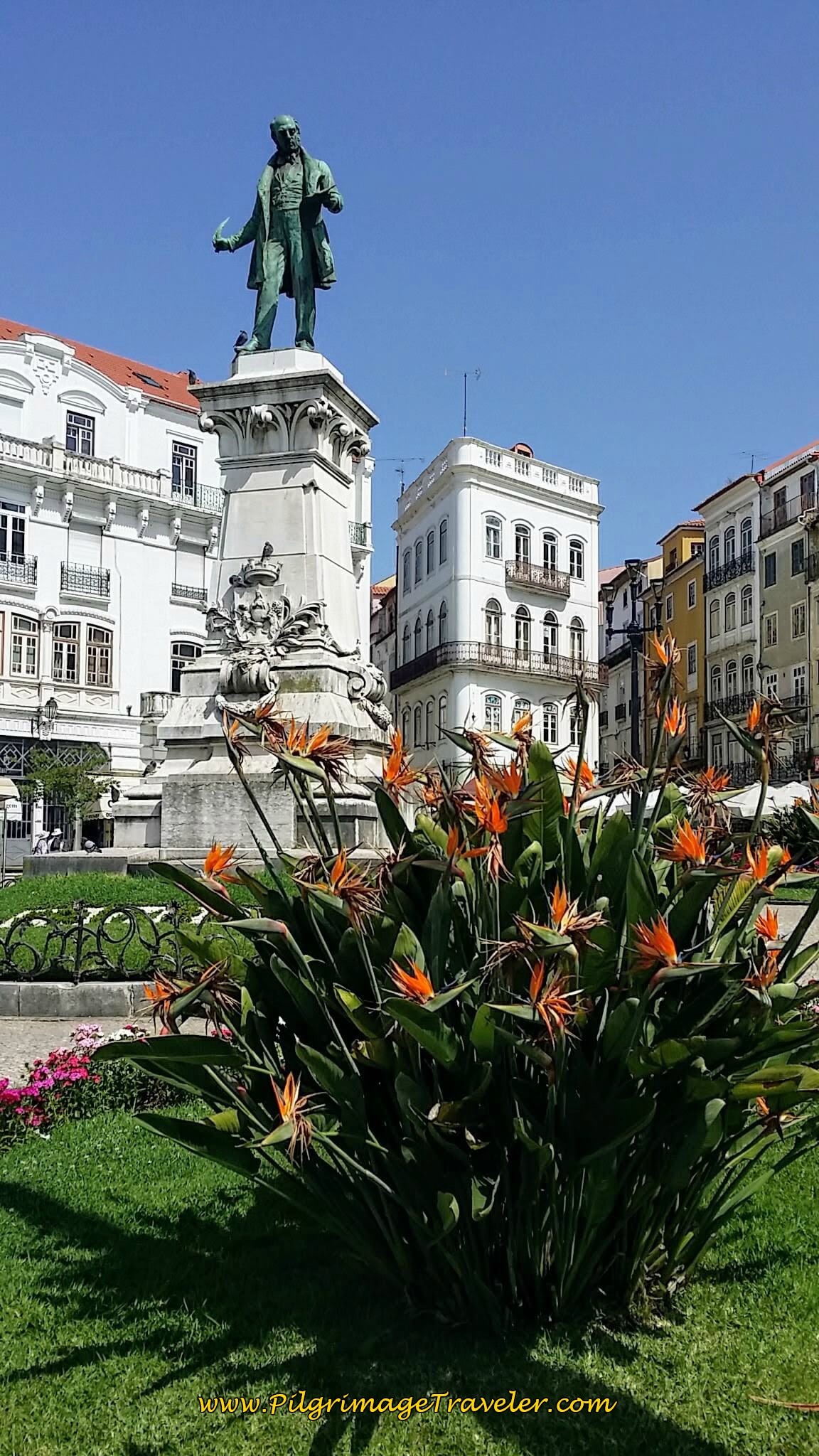




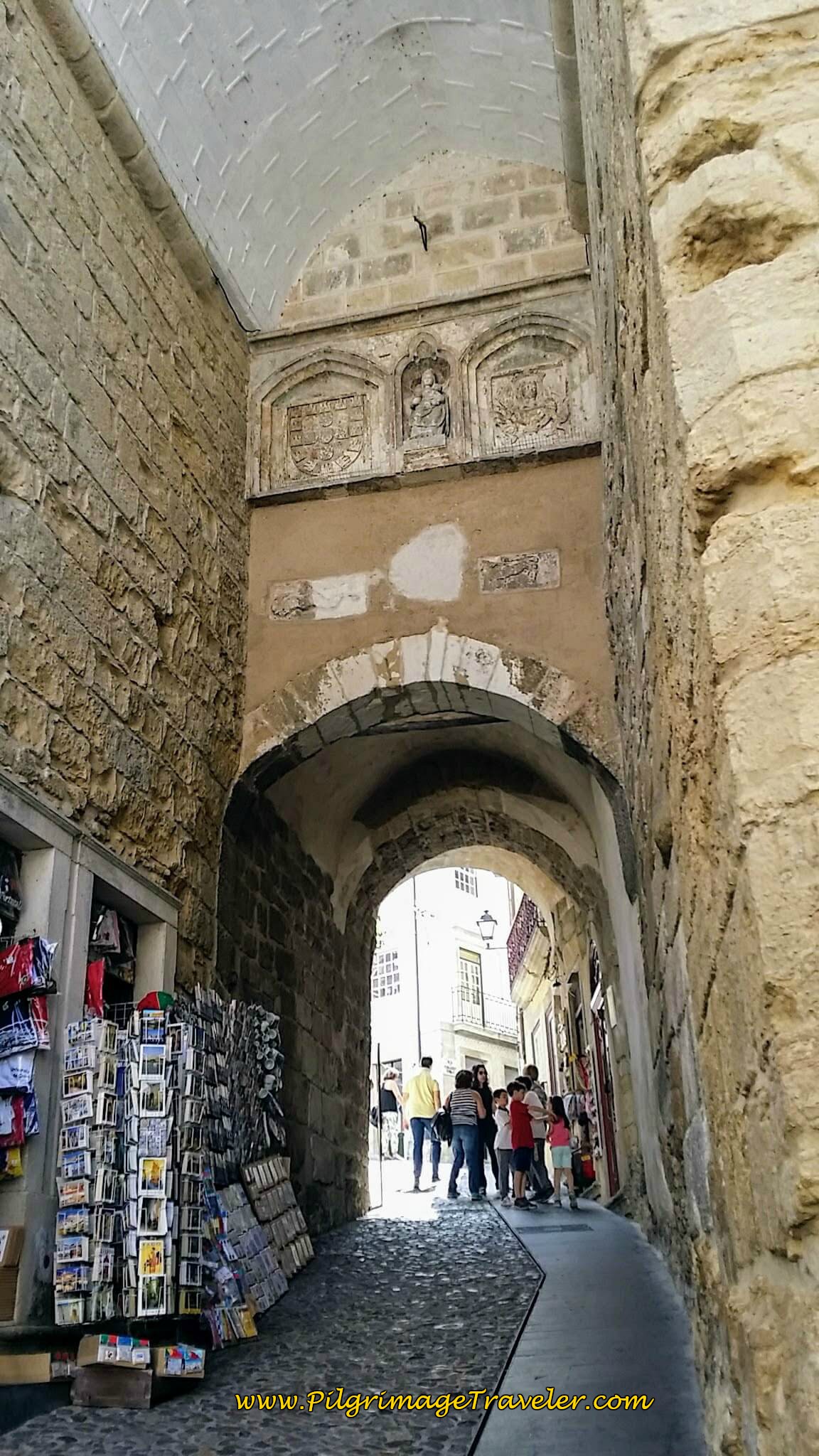
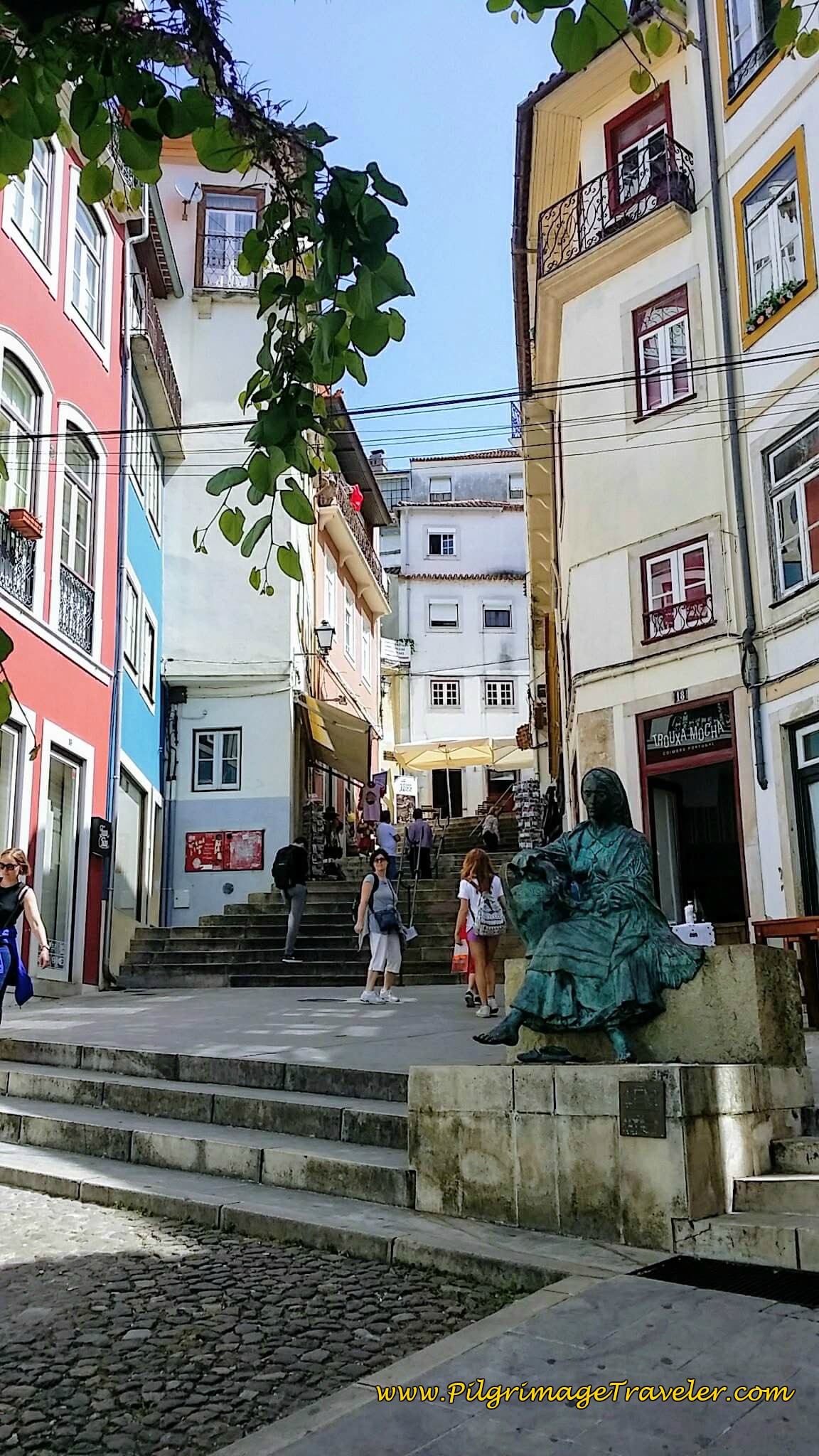

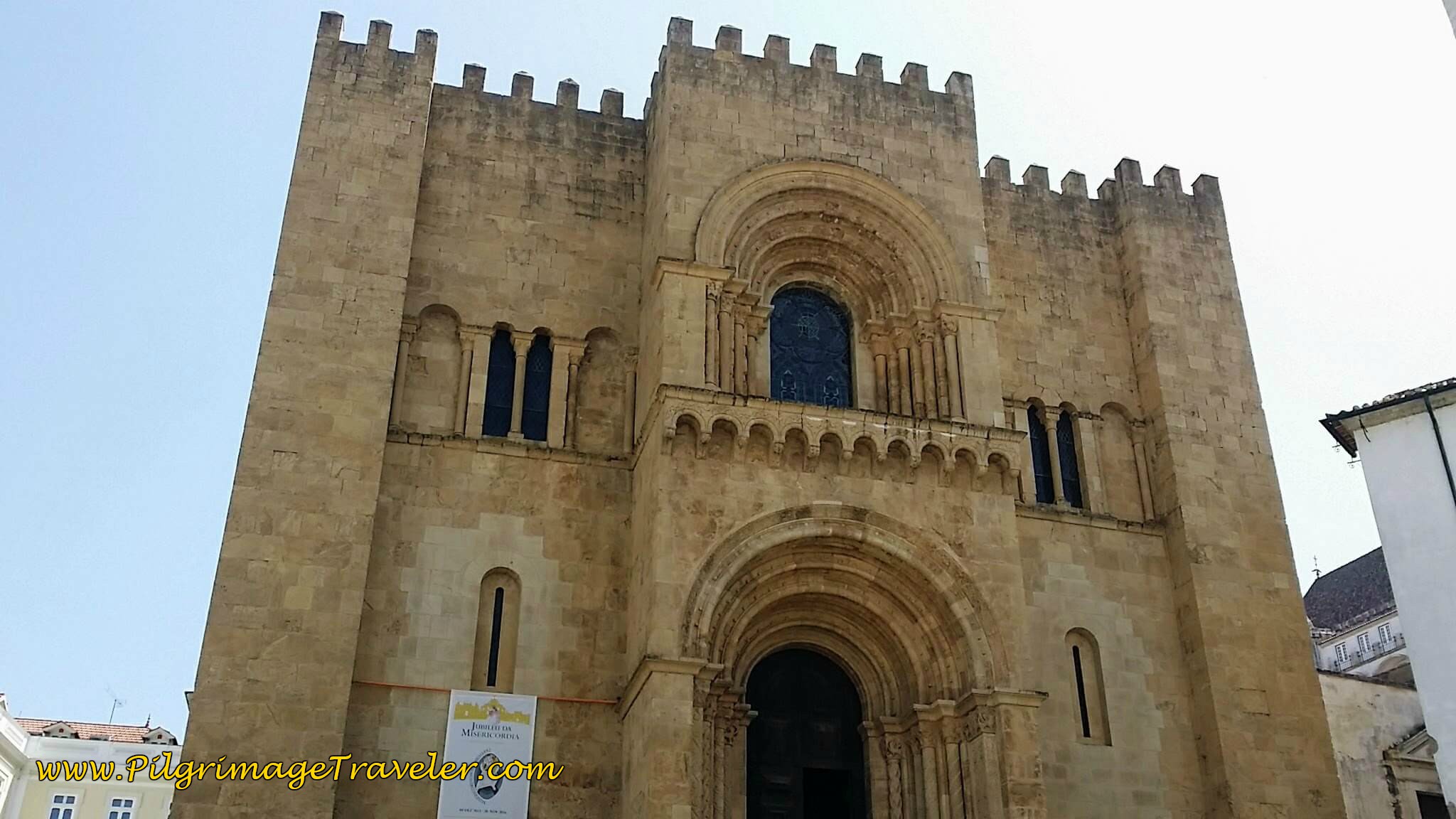

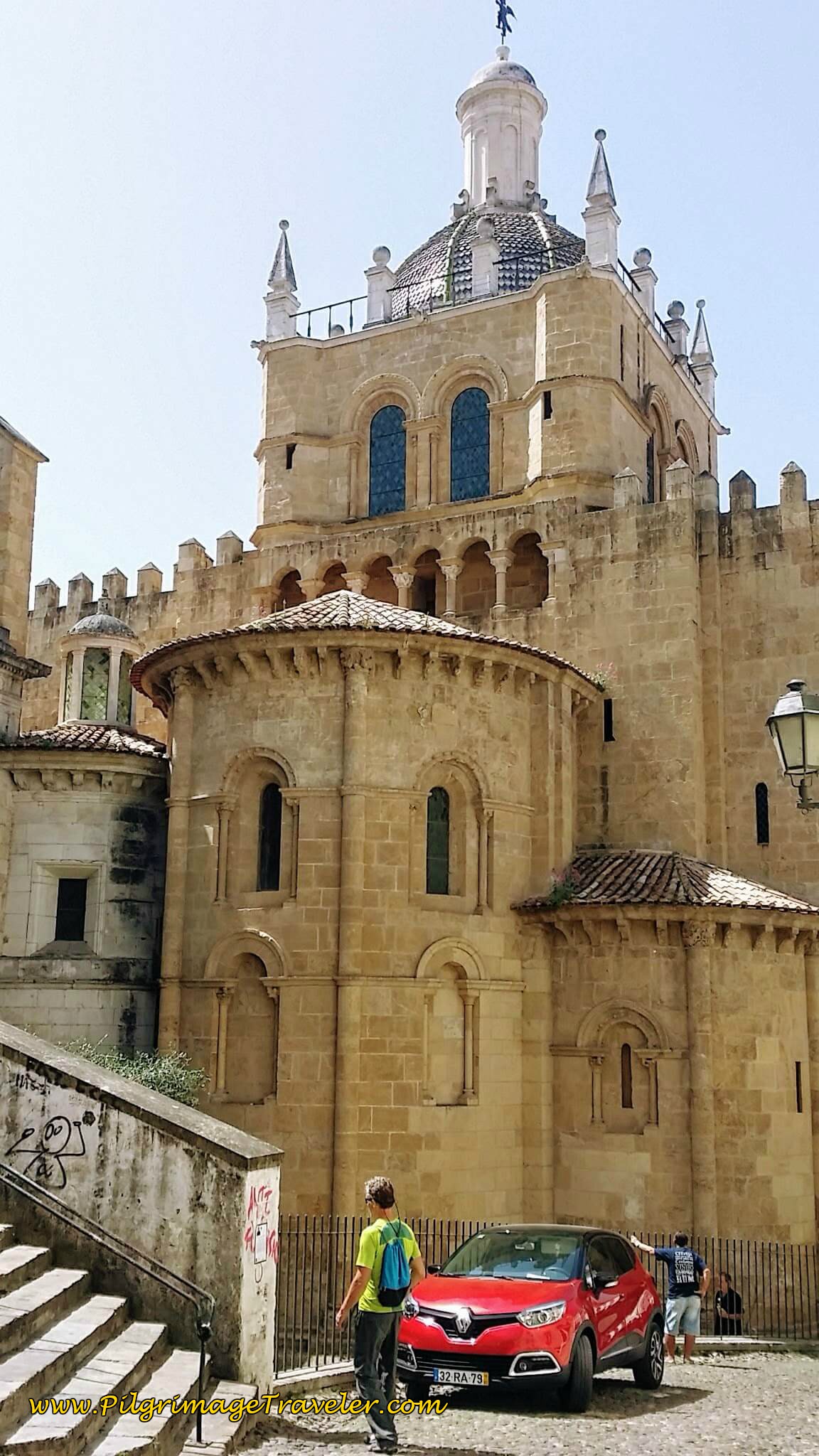
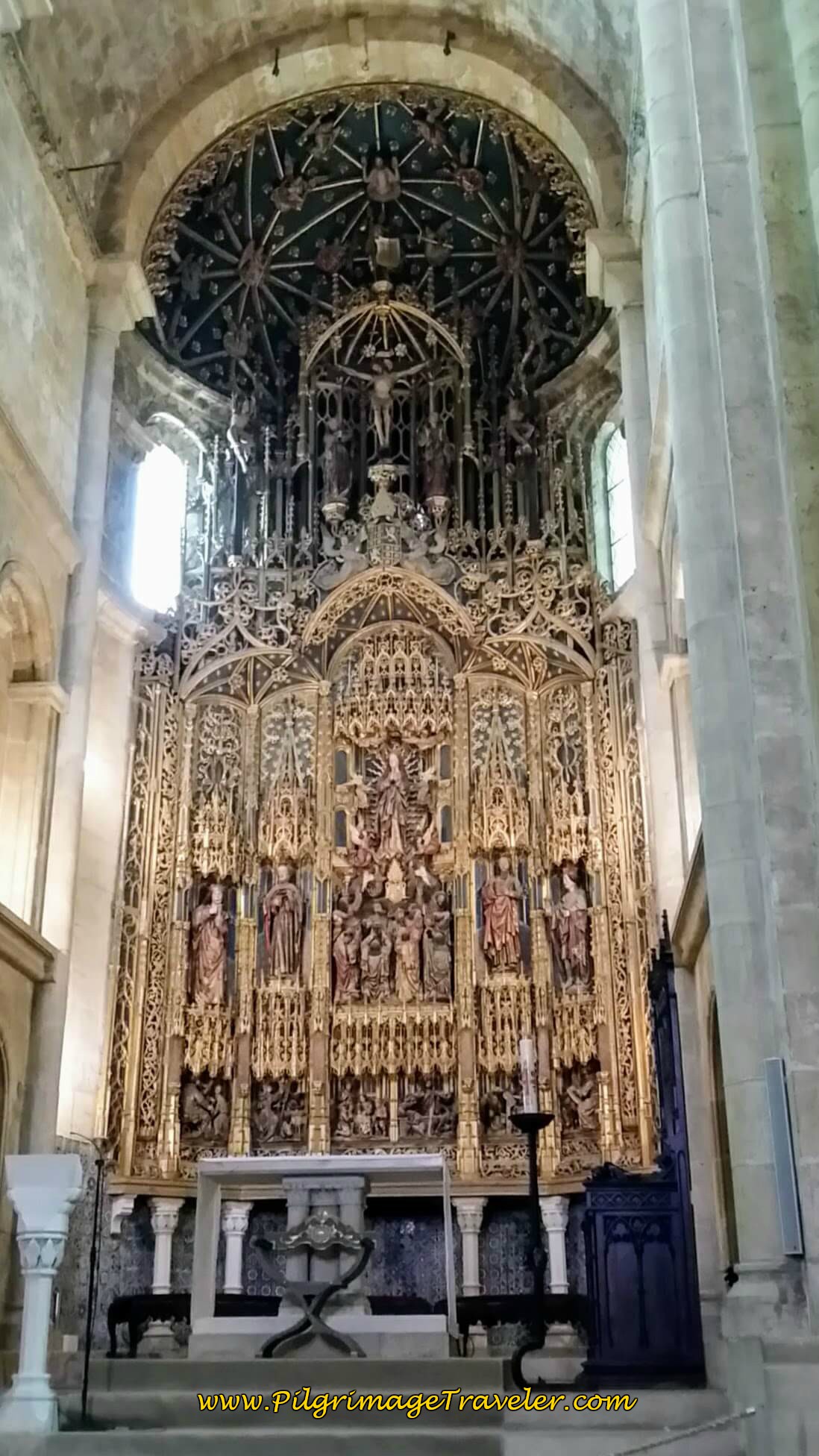
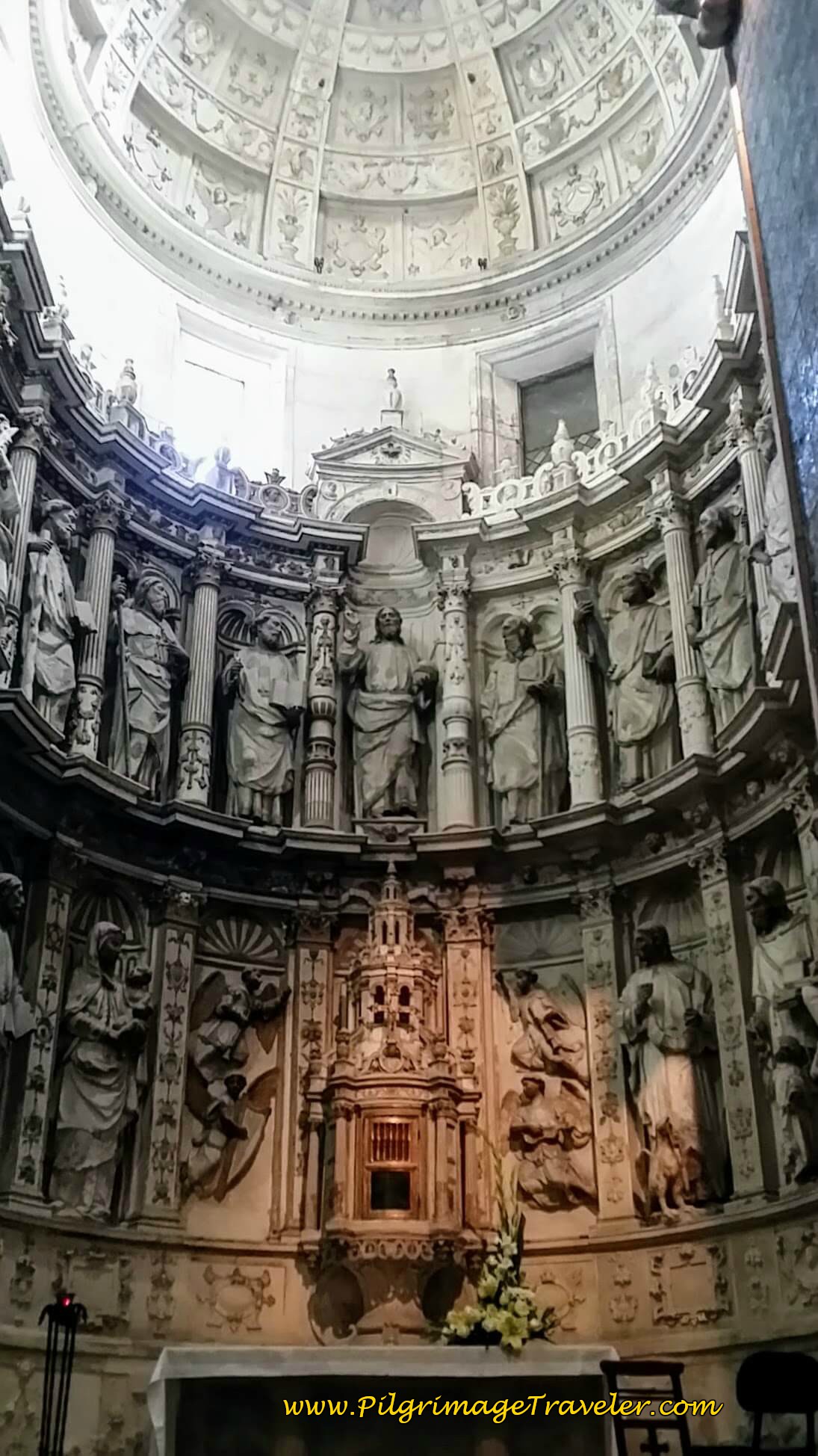

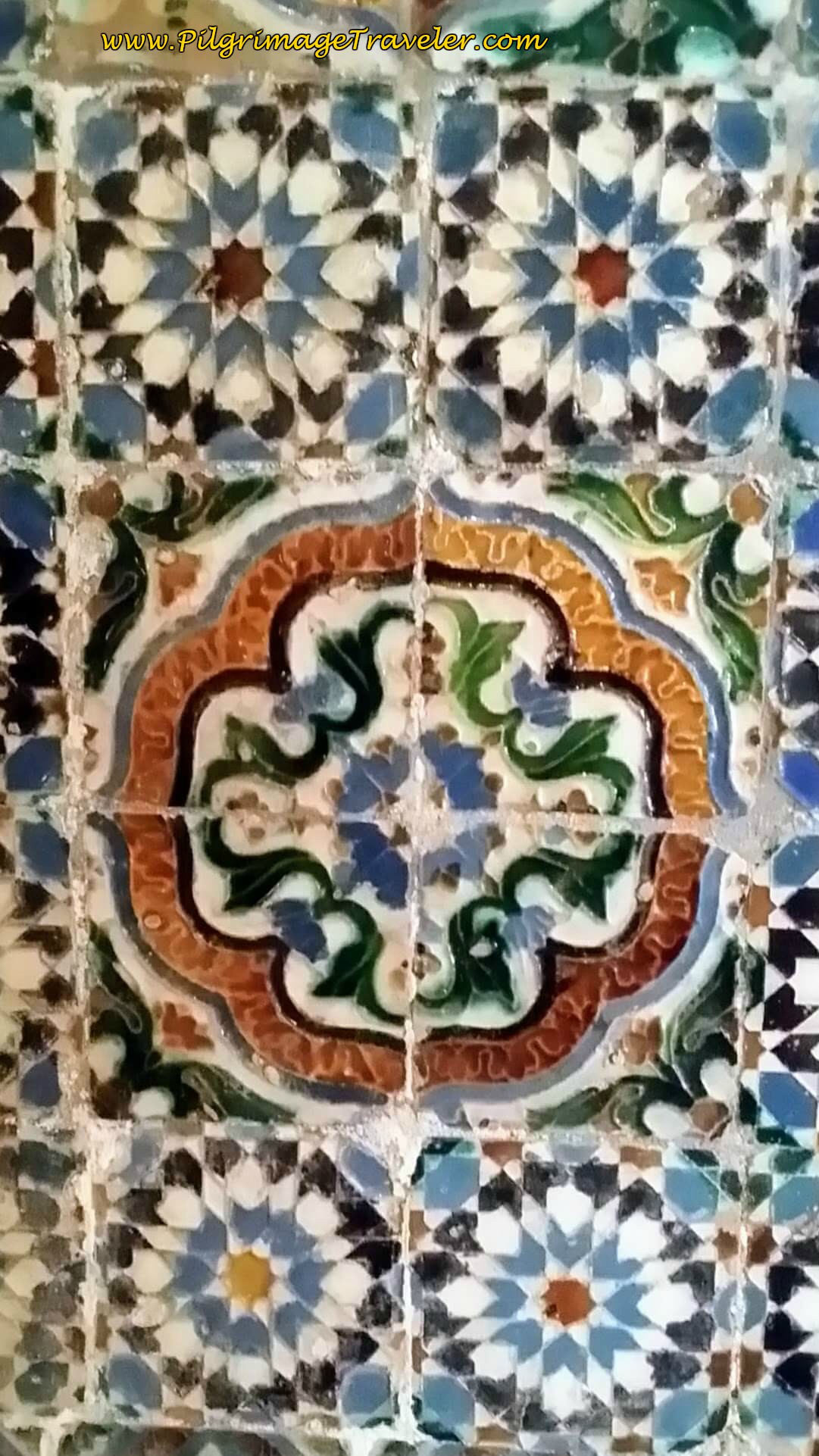

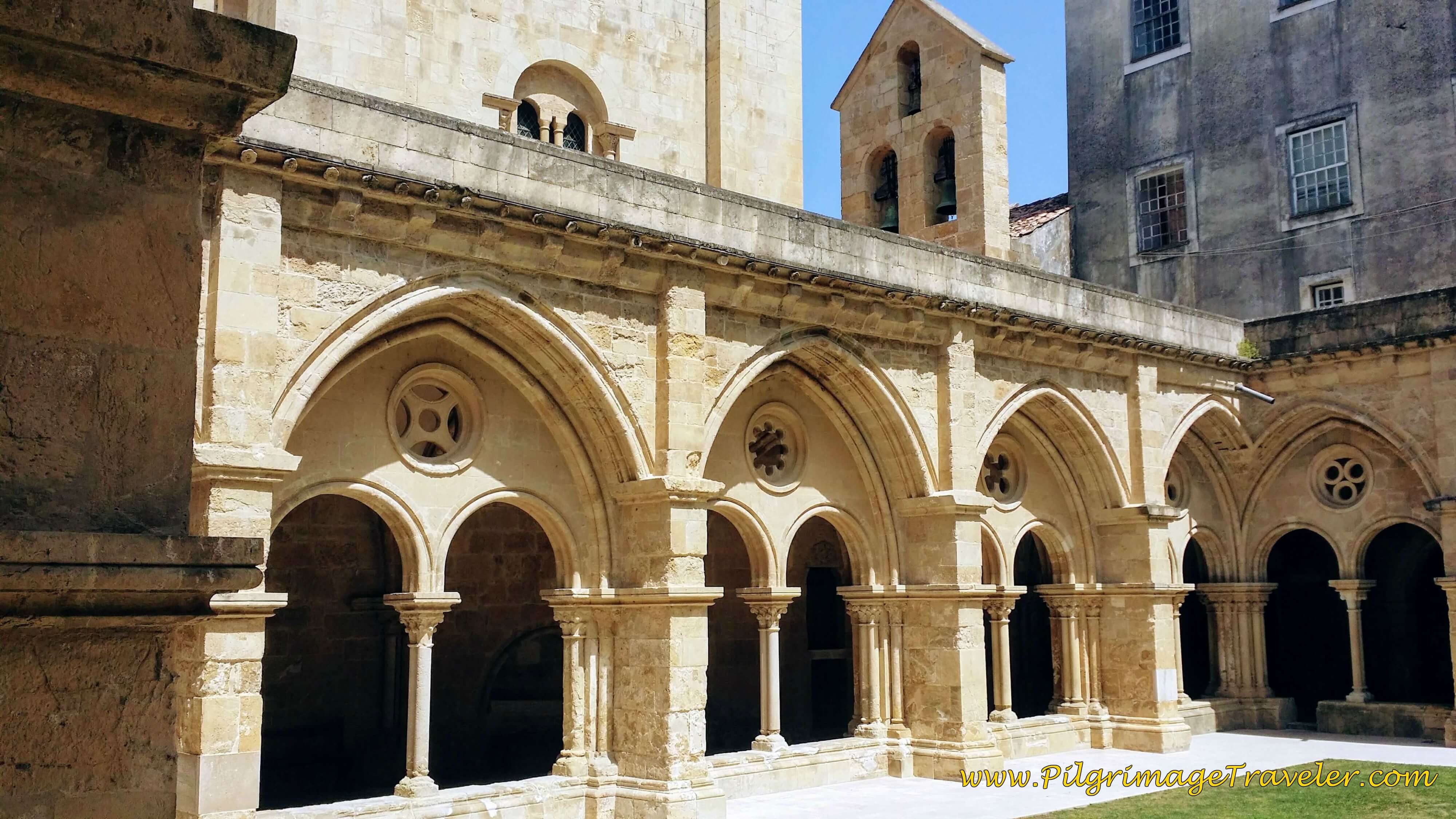

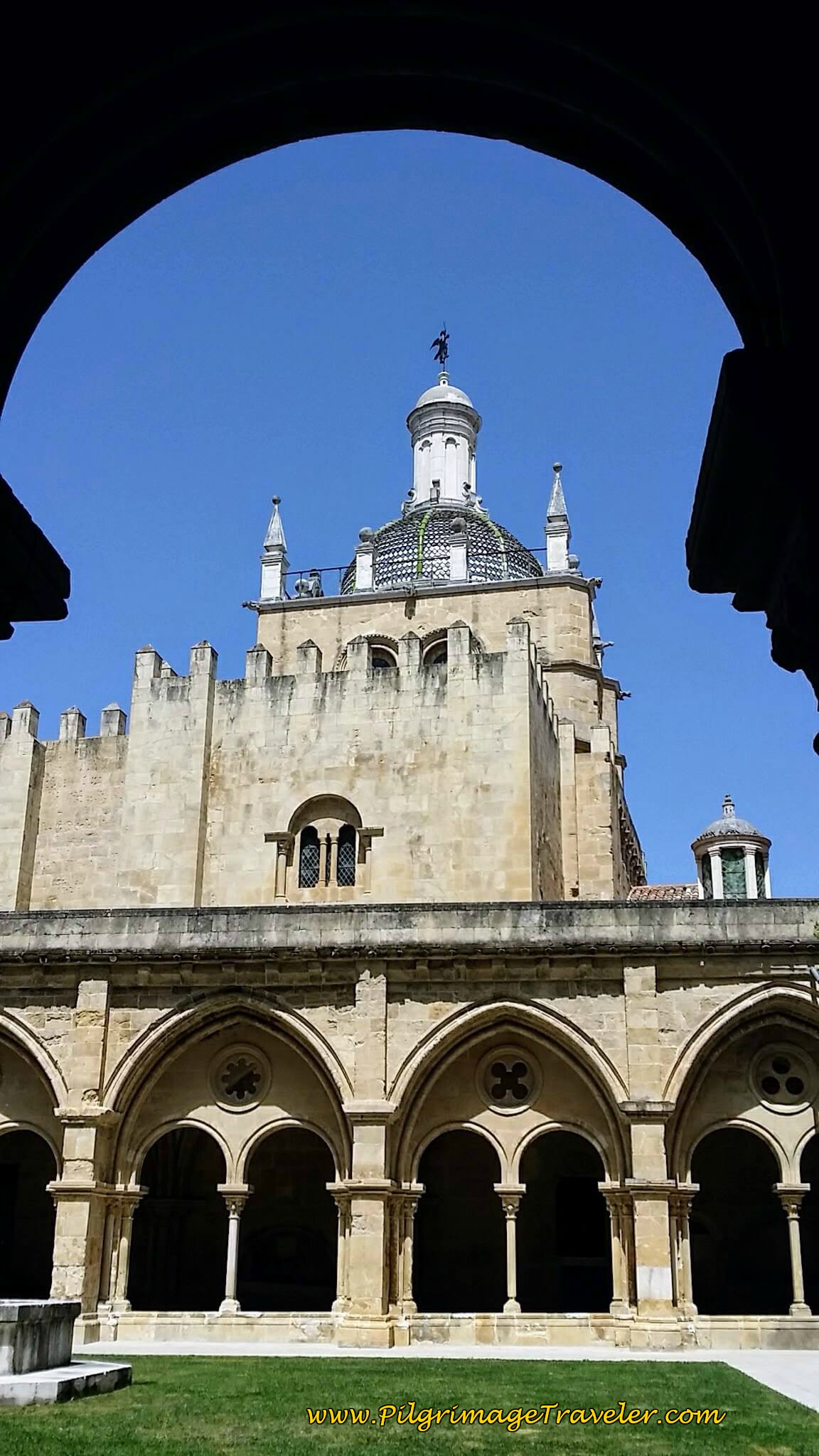





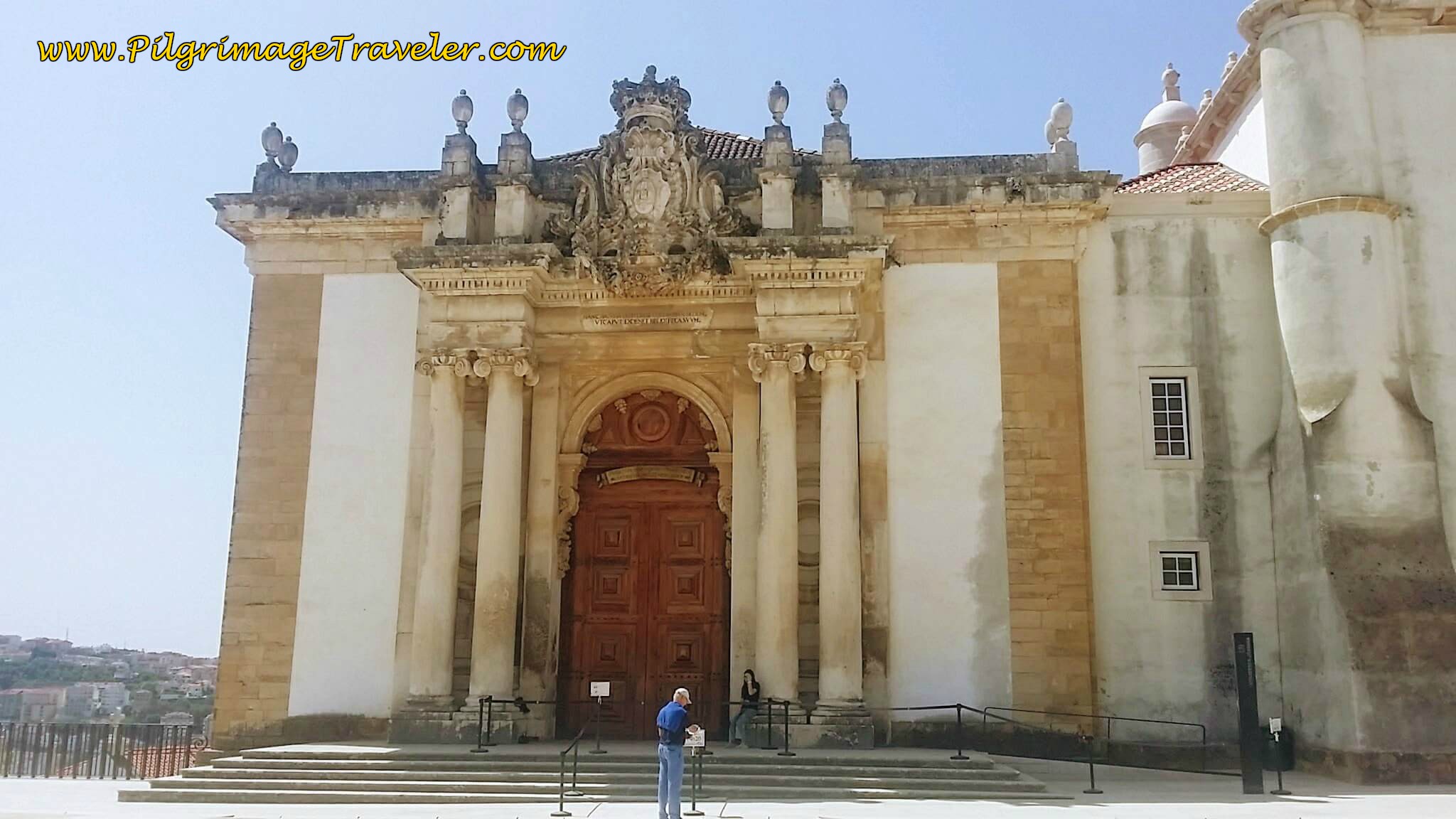
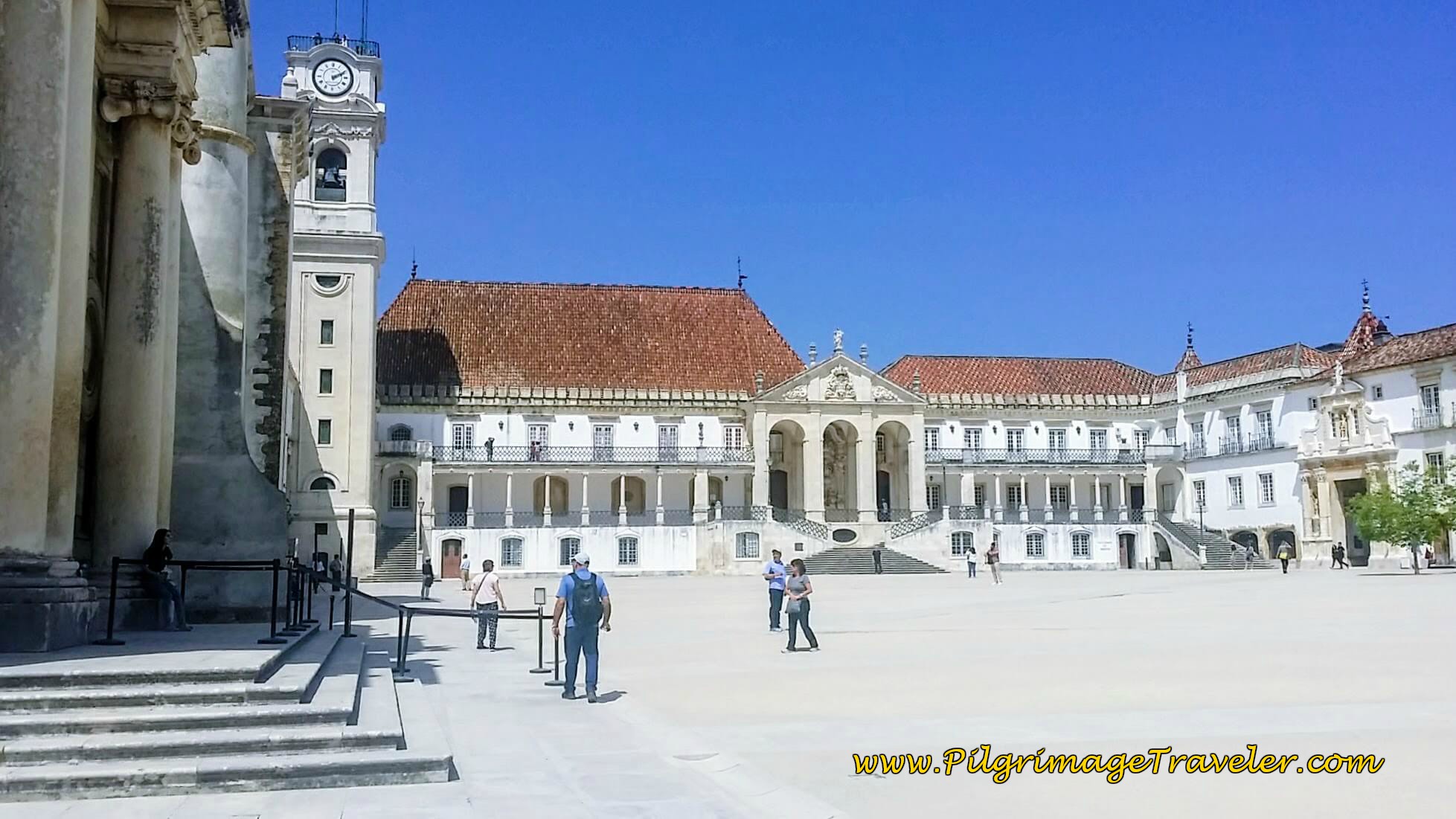


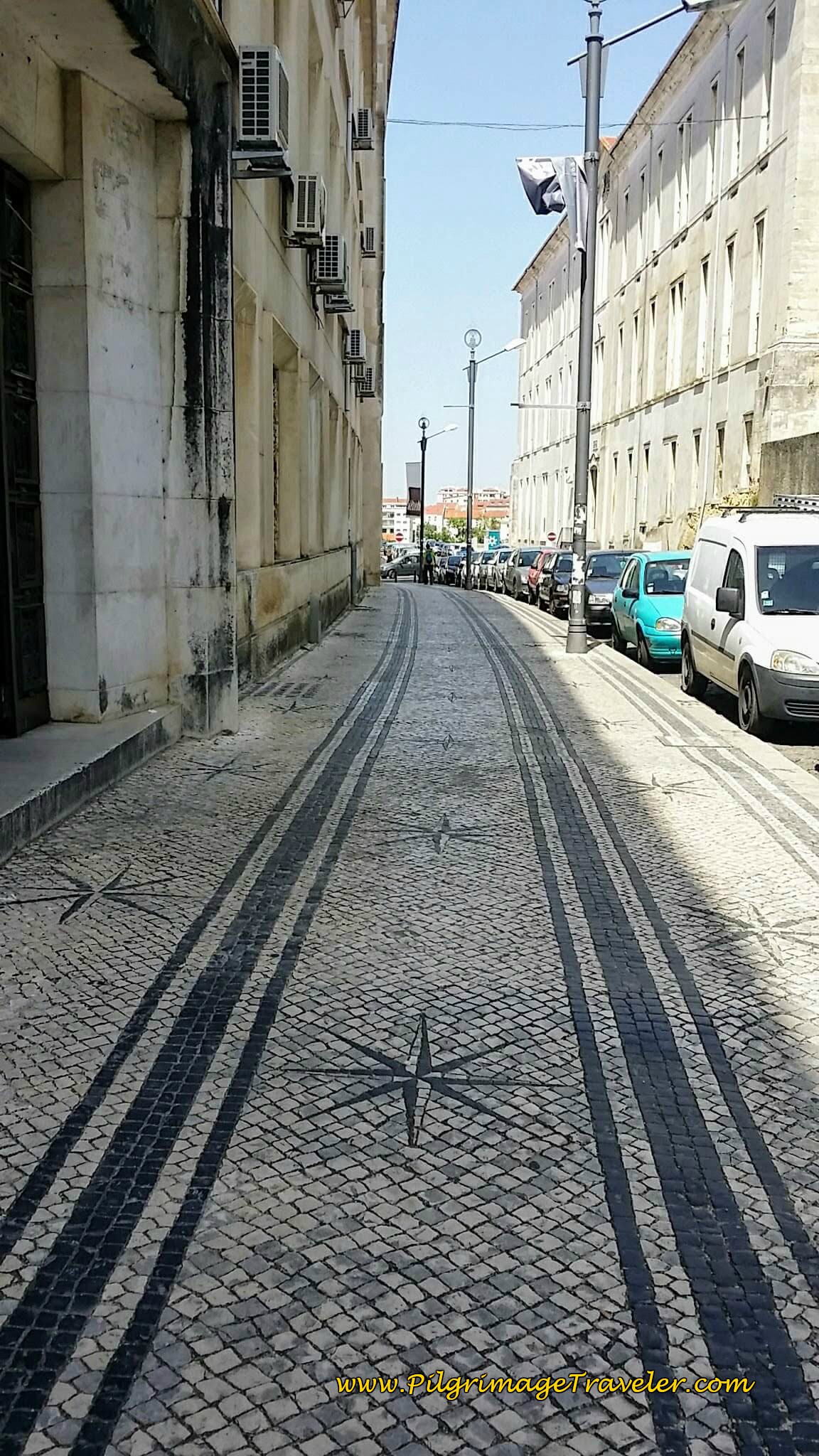

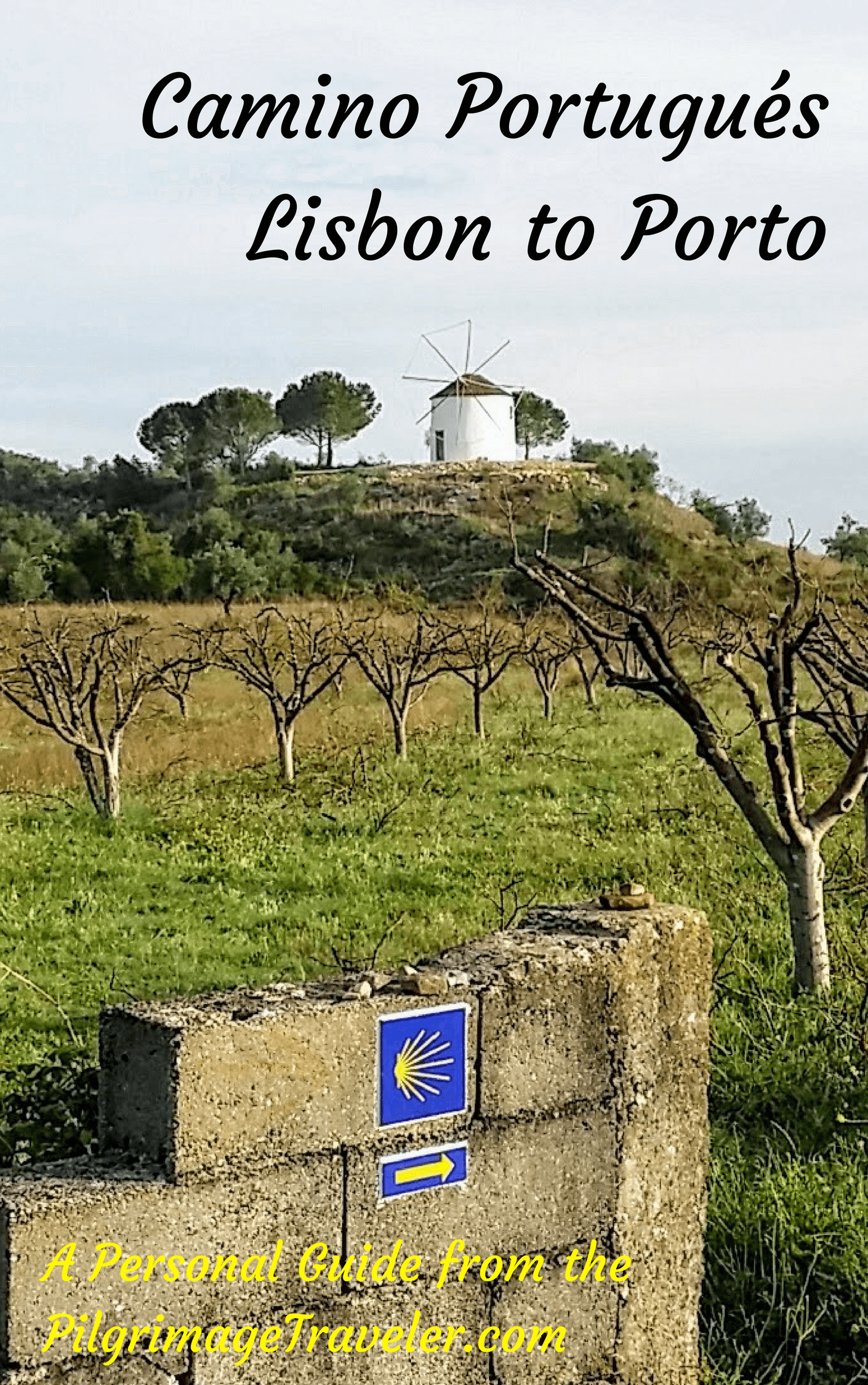



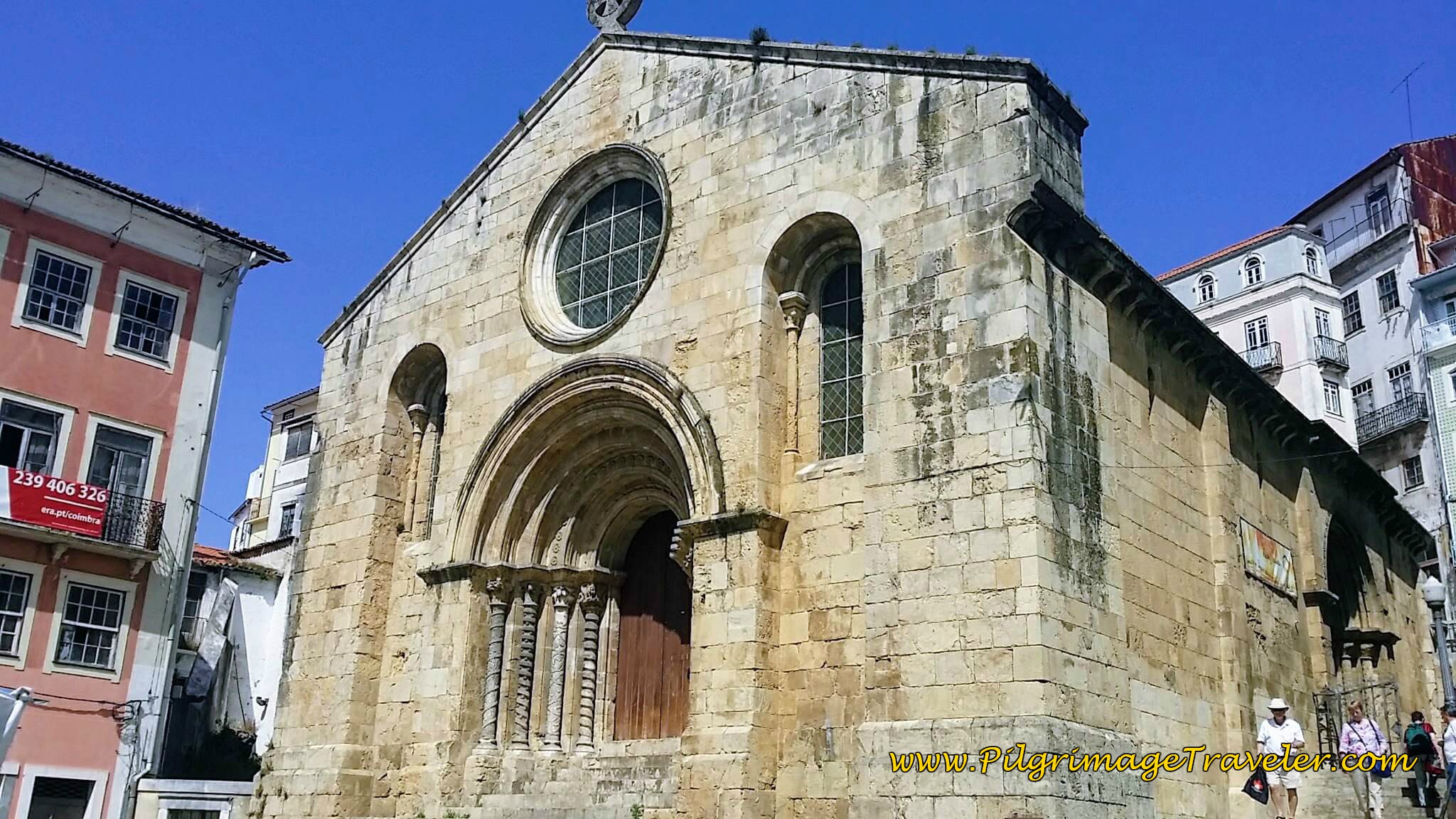





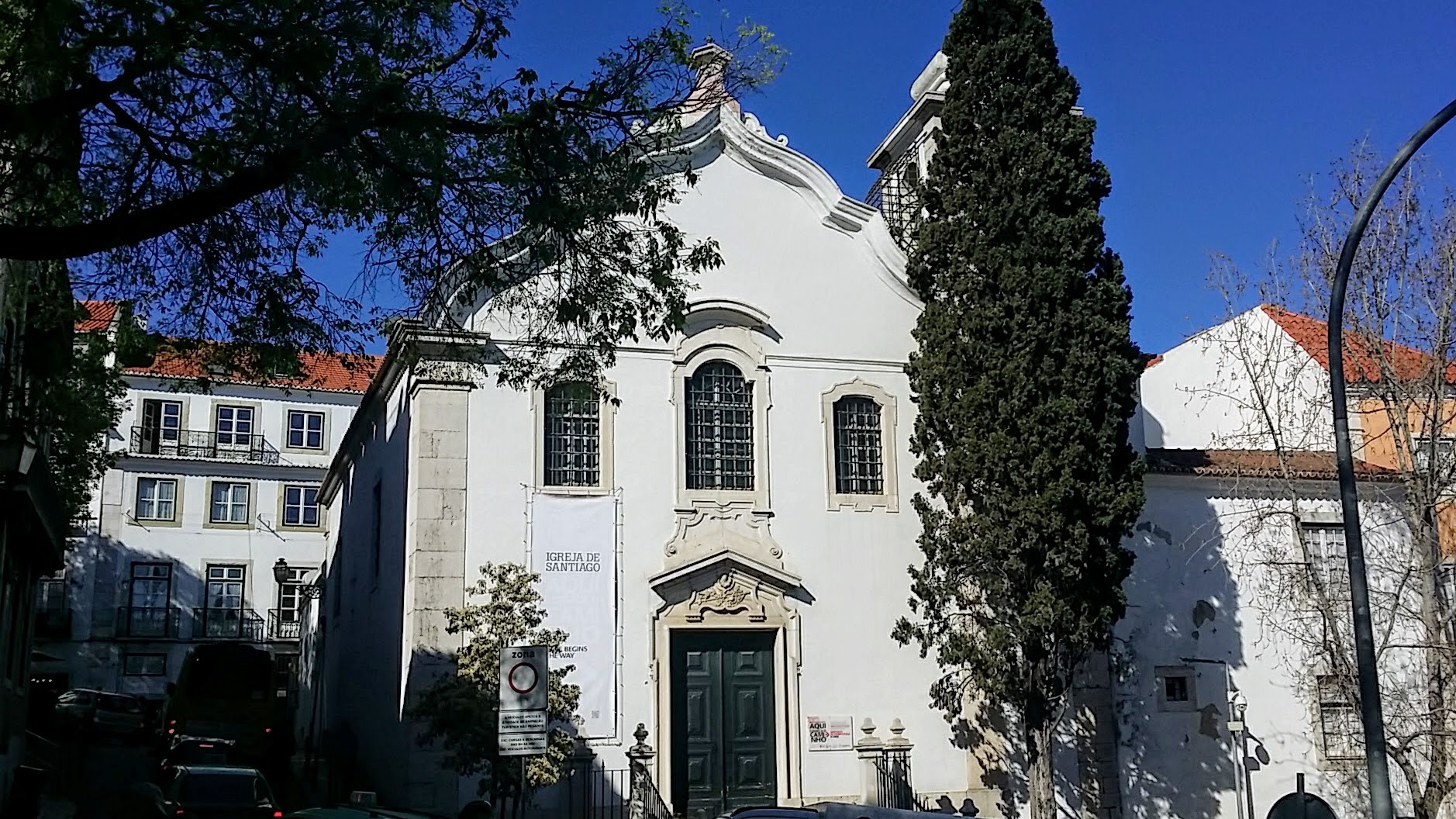

















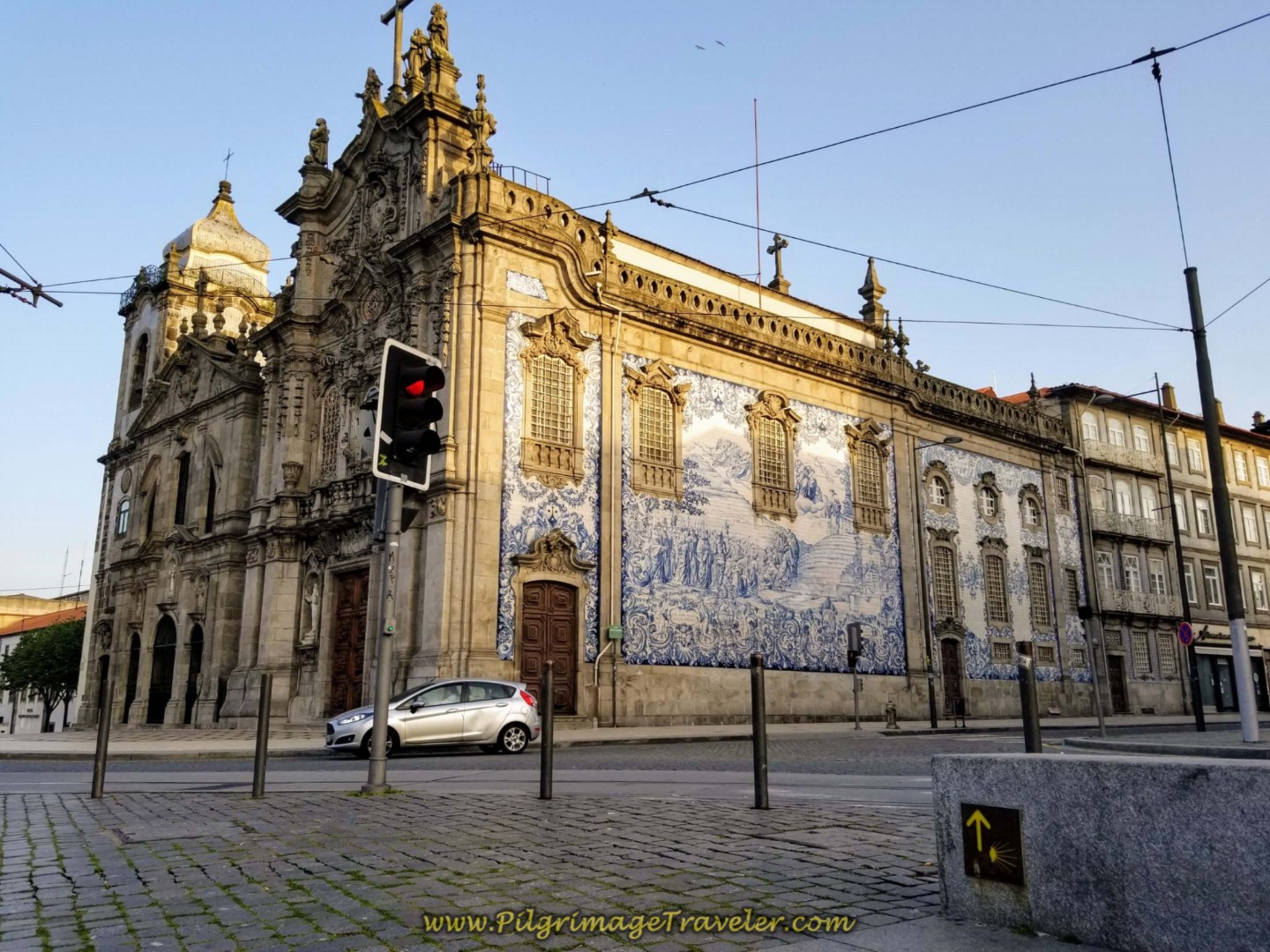










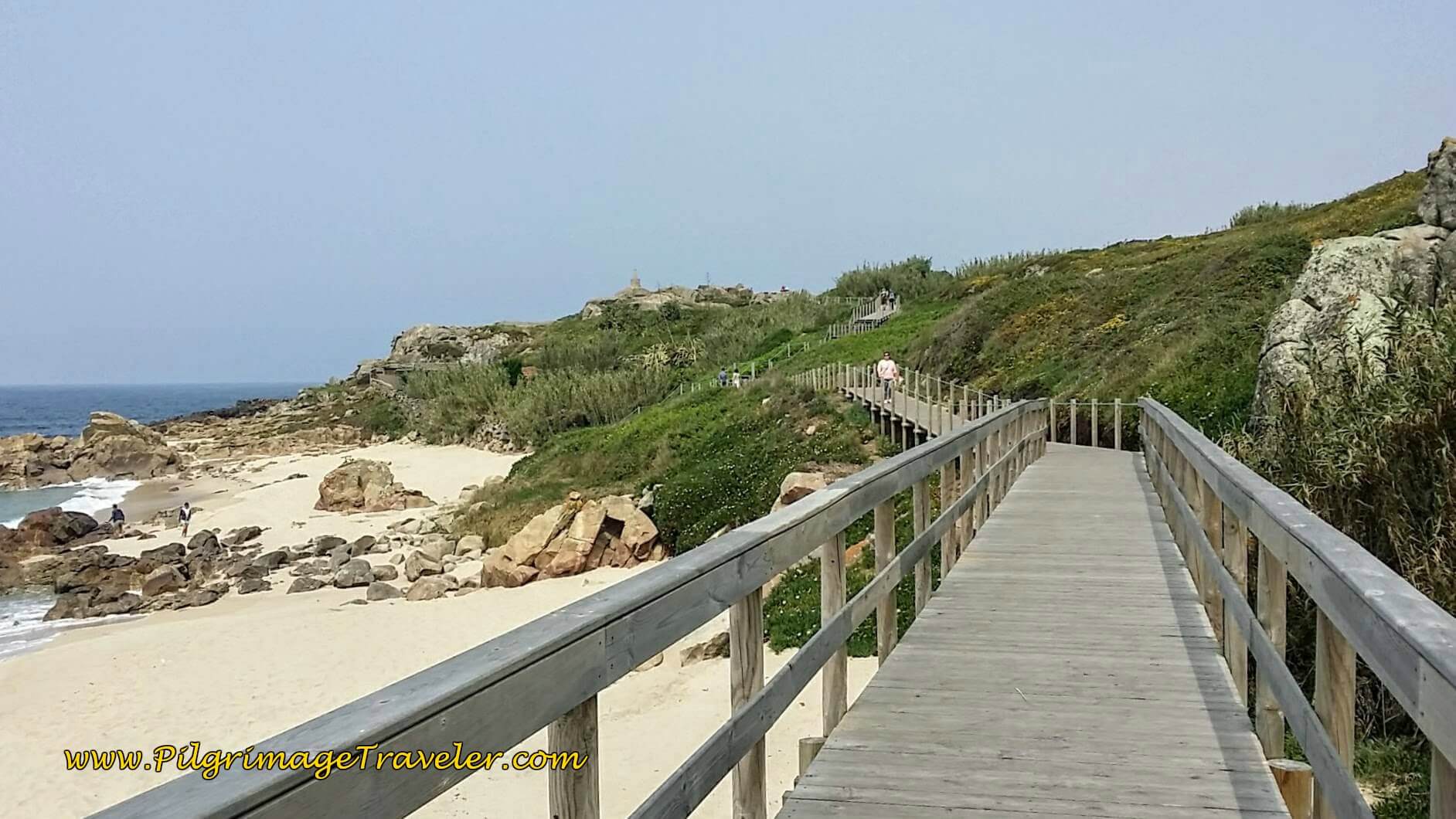













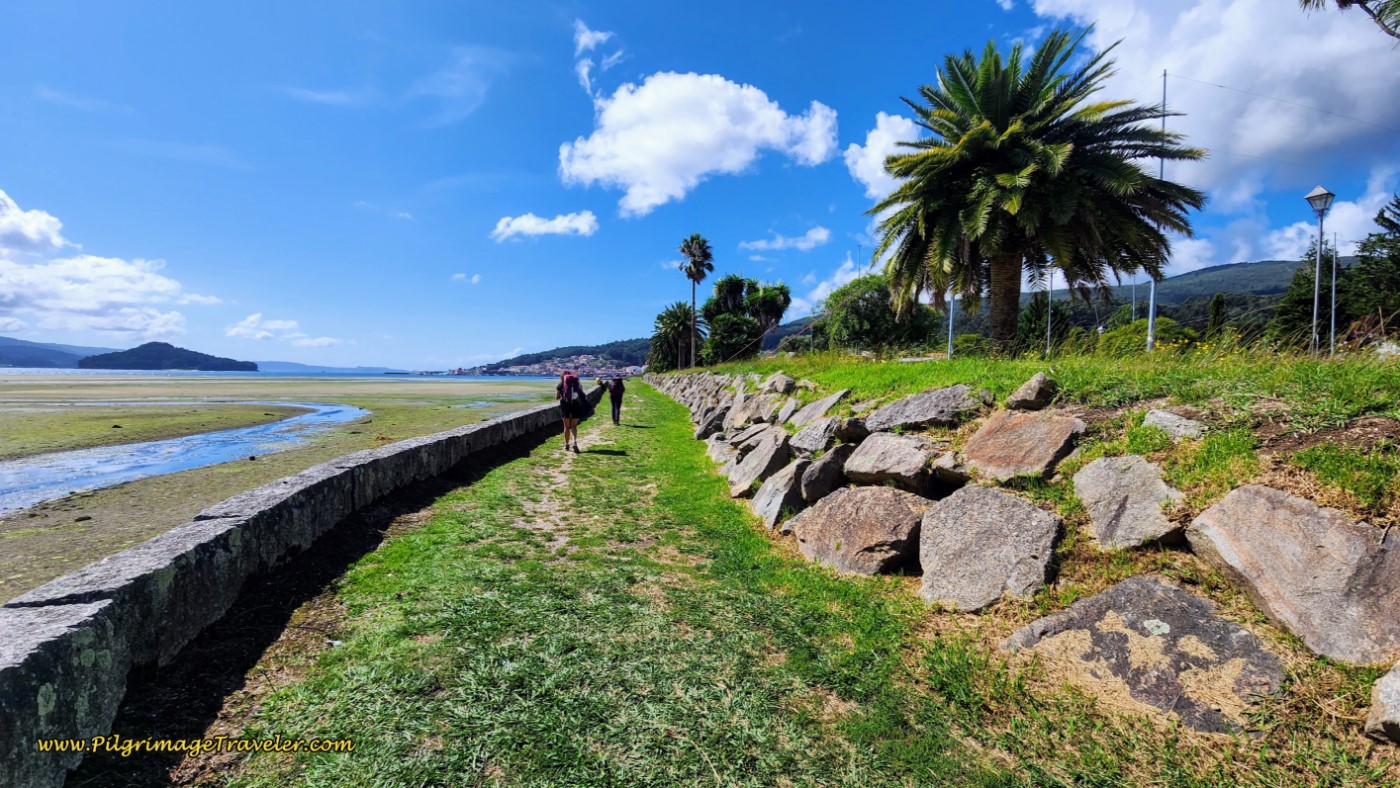







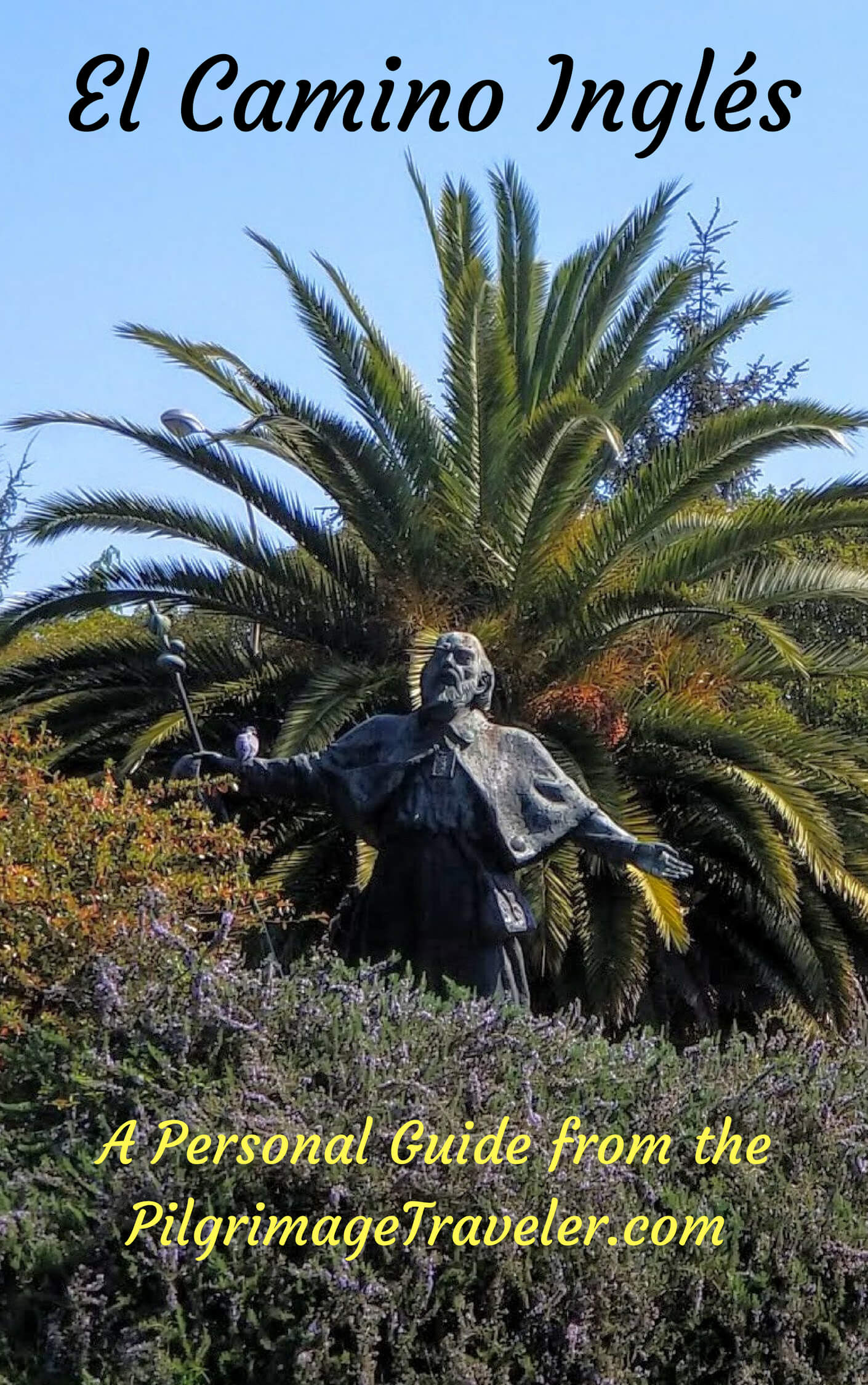







Your Opinion Matters! Comments
Have you had a similar experience, have some advice to give, or have something else you'd like to share? We would love to hear from you! Please leave us a comment in the box below.